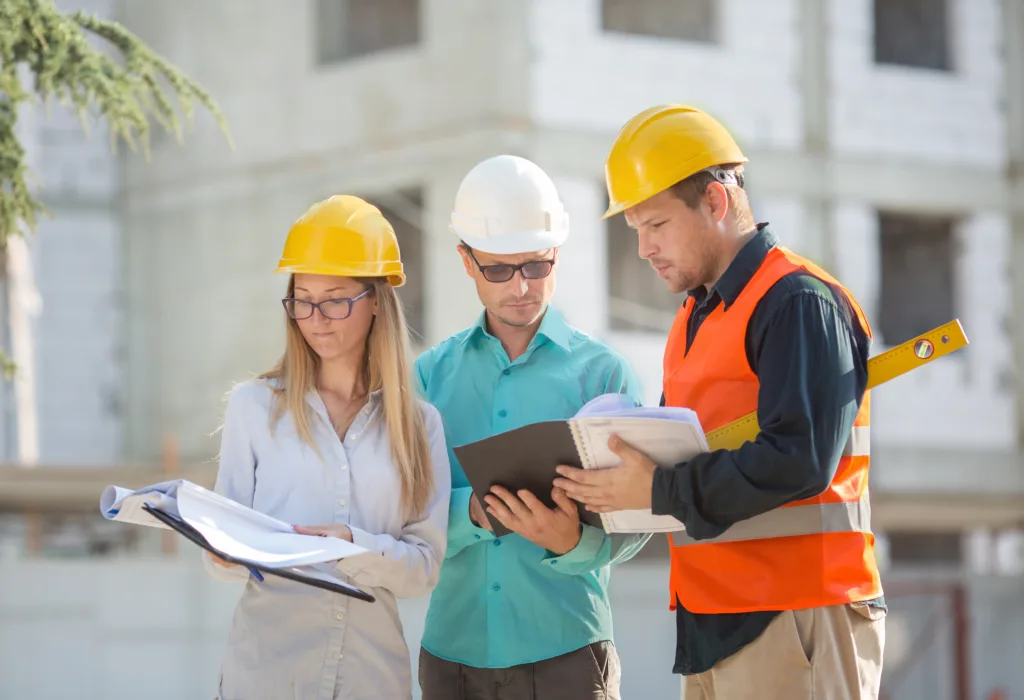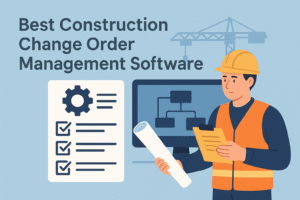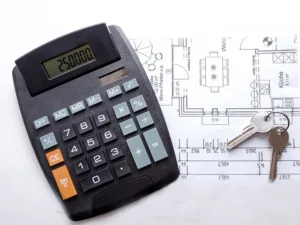In the rapidly evolving world of construction, accuracy is paramount, especially when it comes to cost estimates. From small renovations to towering skyscrapers, the foundation of every successful project lies in meticulous budget planning and precise cost forecasting. The intricate dance of numbers that helps determine the feasibility, profitability, and timeline of a project is the heart of construction estimating.
At first glance, construction estimating might seem like a straightforward task of adding up costs. However, experienced industry professionals know it is far more complex. It requires a deep understanding of construction processes, careful attention to detail, comprehensive knowledge of materials, labor rates, equipment costs, and a keen sense of foreseeing potential project hurdles.
In this blog post, we’ll delve into the essentials of delivering accurate construction estimates and why they matter. We’ll explore the factors influencing cost calculations, discuss the steps involved in creating reliable estimates, and delve into how technology is reshaping this vital aspect of the construction industry. Furthermore, we’ll shed light on the common pitfalls in construction estimating and share some invaluable tips on how to avoid them.
Whether you’re a seasoned construction manager, a budding estimator, or just curious about the nuts and bolts of construction finances, this article aims to provide you with valuable insights and practical strategies for delivering precise construction estimates. Join us as we delve into the world of numbers that quite literally shapes our built environment.
Understanding Construction Estimates
Before we dive deep into the tactics and strategies of creating precise construction estimates, let’s take a moment to define what construction estimates are and why they hold such a pivotal role in any construction project.
A construction estimate can be likened to a roadmap for a project. It provides a detailed forecast of the cost of construction of a building or infrastructure before the actual construction begins. It is an approximation of the costs associated with the materials needed, the labor required, and the equipment necessary to complete the project. Yet, it is not just about adding up these costs; it’s about foreseeing, assessing, and calculating a multitude of factors that might influence these costs along the way.
There are three main types of construction estimates you’ll commonly come across:
1. Preliminary Estimates:
These are initial cost predictions made even before detailed plans and specifications are developed. They are usually based on past projects of similar nature and serve to provide a ballpark figure to assess the financial feasibility of a project.
2. Detailed Estimates:
As the name suggests, these estimates are comprehensive and detailed. They come into play when project plans and designs are fully or nearly complete. Detailed estimates include quantities, costs, and totals for all work and materials necessary to complete a project.
3. Definitive Estimates:
These are the most detailed and precise estimates, often used for contract execution and project control. They are generated after detailed engineering and design work has been done, offering the most accurate representation of the project’s final cost.
The accuracy of construction estimates can make or break a project. Underestimating costs could lead to financial losses and even bankruptcy, while overestimating could mean losing out to competition in a bidding process. Therefore, understanding construction estimates and their importance in project planning and execution is the first step towards delivering accurate construction estimates.
The Impact of Inaccurate Construction Estimates
As we navigate the landscape of construction estimating, it’s essential to consider what happens when our estimates miss the mark. Unfortunately, the impact of inaccurate construction estimates can be far-reaching, creating ripple effects that can disrupt not just the financial aspect of a project, but also its overall timeline and success.
Firstly, let’s consider the financial implications. If a construction estimate undervalues the actual costs, the result can be a significant financial loss for the project. When a project runs over budget, it can lead to difficult decisions like cutting corners, compromising on quality, or even halting construction altogether. In the worst-case scenario, such miscalculations can result in bankruptcy, tarnishing reputations, and leading to legal issues.
On the other hand, overestimating can also pose challenges. In a competitive bidding scenario, an overestimated bid might result in a lost opportunity, as clients often select the most cost-effective proposal that promises quality results. Hence, while it’s crucial to consider all potential costs and risks, it’s equally important not to inflate estimates unnecessarily.
The impact of inaccurate estimates isn’t confined to the realm of finance alone. Timelines are another crucial aspect of construction projects that can be severely affected by incorrect estimates. Underestimating the time required to complete tasks not only leads to project delays but also results in increased labor costs, as workers must be paid for the additional time spent on the project.
Moreover, inaccurate estimates can significantly erode trust and confidence among project stakeholders. When projects consistently exceed their estimated costs or schedules, it diminishes the credibility of the estimator and the construction team as a whole. This loss of trust can be detrimental to long-term business relationships and the reputation of the company in the industry.
In the following sections, we’ll explore how to mitigate these risks by considering key factors affecting construction estimates and offering a step-by-step guide to creating accurate ones. This knowledge is not just a “nice-to-have”; it’s a necessity for anyone striving to deliver successful construction projects on time and on budget.
Key Factors Affecting Construction Estimates
Accurate construction estimates aren’t products of guesswork or approximations; they’re born out of careful consideration of various factors that significantly influence project costs. Understanding these components is like having the secret ingredients to a master recipe – knowing what to include and how much can make all the difference to the final product.
Let’s explore some of these key factors:
1. Material Costs:
This is an apparent factor but requires careful consideration. The price of raw materials can fluctuate due to a variety of factors such as supply and demand, geopolitical events, and changes in legislation. Accurate estimates require up-to-date knowledge of current market prices and, if possible, forecasting future trends.
2. Labor Rates:
Wages for construction workers can vary widely based on the location of the project, the complexity of the tasks involved, and the current state of the job market. It’s essential to account for potential overtime, weekends, and holiday pay that might be required to meet project deadlines.
3. Equipment Costs:
This includes the cost of renting or purchasing necessary machinery and equipment, along with maintenance and operating costs. Remember, it’s not just about the large machinery; don’t forget about smaller tools that may need to be purchased or replaced.
4. Project Duration:
The timeline of a project can directly influence its cost. Longer projects mean more days of labor to pay for and a higher chance of material prices fluctuating. Incorporating a realistic timeline into your estimate is crucial.
5. Site Conditions:
The conditions of the construction site can greatly affect the cost and timeline of a project. Factors like soil type, existing structures, accessibility, and local weather conditions all need to be accounted for in an accurate estimate.
6. Project Complexity and Risk:
Complex projects require more resources, specialized labor, and carry more risk – all of which can drive up costs. Risks such as potential safety hazards, unforeseen site conditions, and project delays should be factored into the estimate.
7. Market Trends and Economic Factors:
Broader economic trends and market conditions can also influence the cost of construction projects. These include interest rates, inflation, and even the overall health of the construction industry.
By considering these factors in detail, construction estimators can navigate the often-turbulent waters of cost prediction and arrive at an estimate that is as close as possible to the actual cost of the project.
In the next section, we’ll put these factors into action and walk through the steps to creating accurate construction estimates. So keep reading as we embark on this enlightening journey!
Steps to Creating Accurate Construction Estimates
Creating an accurate construction estimate is a meticulous process that requires a blend of experience, industry knowledge, and careful analysis. It’s like assembling a puzzle, where each piece is a different cost factor, and the goal is to create a comprehensive picture of your project’s total cost. Let’s walk through the steps involved in creating an accurate construction estimate:
1. Understand the Project Scope
The first step in estimating construction costs is to understand the project’s scope. This means thoroughly analyzing project plans, blueprints, and specifications. This comprehensive understanding of the project will allow you to identify all tasks that need to be completed and start the process of quantifying and pricing these tasks.
2. Quantify Material, Labor, and Equipment Needs
Next, create a detailed list of all the materials that will be required for the project, noting the quantity needed for each. Don’t forget to include smaller materials, like nails and screws, which can add up over time. Once you have quantified the materials, it’s time to estimate labor and equipment needs. How many workers will you need? What type of skills should they have? What equipment will be necessary?
3. Calculate Costs
With your list of materials, labor, and equipment in hand, you can now start calculating costs. Using current market prices for materials and standard labor rates in your area, assign a cost to each item on your list. Remember to account for equipment rental or purchase costs as well.
4. Consider the Project Timeline
Consider how long the project will take and how that timeline will affect your costs. Longer projects will require more labor hours and may lead to higher equipment rental costs. Additionally, a longer timeline increases the risk of material prices fluctuating, which should be taken into account.
5. Account for Project Risks and Overheads
Every construction project comes with a certain level of risk and unexpected challenges. Whether it’s unforeseen site conditions or project delays due to bad weather, it’s important to include a contingency allowance in your estimate to cover these potential costs. Also, don’t forget to factor in overhead costs like office expenses, utilities, permits, and insurance.
6. Add Your Profit Margin
Finally, add your desired profit margin to the estimate. Your profit margin should be a percentage of the total cost of the project and will depend on industry standards, the complexity of the project, and the level of risk involved.
The task of creating accurate construction estimates might seem daunting, but by following these steps and using the right tools and technology, it becomes a more manageable task. In the next section, we’ll discuss how technology can help you streamline the estimating process and increase accuracy. Stay tuned!
Leveraging Technology in Construction Estimating
As the old saying goes, “Work smarter, not harder.” In the realm of construction estimating, this couldn’t be more true. In today’s digital age, a variety of technologies and software tools are available to assist construction estimators in their quest for accuracy, allowing them to work more efficiently and reduce the chance of error. Let’s explore how you can leverage technology to enhance your estimating process.
1. Construction Estimating Software
Estimating software is becoming increasingly popular in the construction industry. These programs streamline the estimating process by providing tools to organize and calculate costs, track changes, and even automate parts of the estimating process.
Software like PlanSwift, Bluebeam Revu, and ProEst, among others, provide functionalities such as digital takeoffs, which allow you to measure dimensions directly from digital blueprints, and cost databases, which maintain up-to-date material and equipment prices. These tools can dramatically reduce the time spent on creating estimates and increase their accuracy.
2. Building Information Modeling (BIM)
Building Information Modeling (BIM) is a 3D model-based process that gives architecture, engineering, and construction (AEC) professionals the insight and tools to more efficiently plan, design, construct, and manage buildings and infrastructure.
BIM not only provides a visual representation of the building but also includes a wealth of information about each component, including its dimensions, materials, and costs. This data-rich model allows for more accurate and detailed estimates and helps identify potential issues before construction begins.
3. Project Management Software
Project management software like Microsoft Project, Basecamp, or Asana can also be instrumental in the estimating process. These platforms can help you keep track of the project’s timeline and tasks, monitor progress, and effectively manage resources, which can feed back into your cost estimates.
4. Machine Learning and AI
While still in the early stages of adoption in the construction industry, Machine Learning and AI have the potential to transform construction estimating. By analyzing past project data, these technologies can predict costs and timelines, identify trends, and even recommend ways to optimize costs.
The key to leveraging technology in construction estimating is to choose the right tools for your specific needs and ensure that they are used effectively. With the right tech in your toolbox, you can enhance the accuracy of your estimates, save time, and ultimately, increase your project’s success.
Skills and Traits of an Effective Construction Estimator
Estimating construction costs is as much an art as it is a science. While knowledge and understanding of construction processes, materials, and technology are vital, there are several other skills and traits that define an effective construction estimator. Let’s delve into some of these characteristics:
1. Attention to Detail
Accuracy in construction estimating hinges on the ability to scrutinize every detail, from the biggest tasks to the smallest materials. Overlooking even a small item can lead to significant inaccuracies in the overall estimate. Therefore, a keen eye for detail is an invaluable trait for an estimator.
2. Analytical Skills
Estimators need to be able to analyze and interpret complex project plans, specifications, and contracts. They also need to be adept at performing mathematical calculations and using estimating software and other technologies. Strong analytical skills are crucial for making sense of all this information and transforming it into accurate estimates.
3. Knowledge of Construction
A deep understanding of construction processes, materials, and techniques is essential for creating realistic estimates. This includes knowledge of current market prices for materials, labor rates, and how different factors can influence the cost and timeline of a project.
4. Communication Skills
Construction estimators often need to communicate their findings and assumptions to project managers, clients, and other stakeholders. Being able to articulate this information clearly and effectively is key to ensuring that everyone is on the same page and that the estimate is understood and accepted.
5. Problem-Solving Abilities
Construction projects are often fraught with unforeseen challenges and complications. Being able to anticipate potential issues and figure out how to address them in the estimate is an essential skill for an estimator.
6. Integrity
Construction estimators hold a lot of responsibility, and their estimates can significantly impact a project’s success. Therefore, it’s crucial for estimators to uphold high standards of integrity, providing honest and unbiased estimates even when it’s tempting to underbid to win a project or overbid to ensure a larger profit margin.
7. Confidence
Finally, given the high-stakes nature of construction estimating, confidence is key. Estimators must have faith in their skills and knowledge, stand behind their estimates, and be ready to defend them if questioned.
By fostering these skills and traits, you can become not just a good construction estimator, but an outstanding one, equipped to deliver accurate estimates that contribute to successful, profitable projects.
Common Pitfalls in Construction Estimating and How to Avoid Them
Estimating construction costs is a delicate balancing act, and it’s easy to stumble along the way. By being aware of common pitfalls and learning how to avoid them, you can ensure your estimates remain on solid ground. Let’s look at some of these common challenges and how you can navigate around them:
1. Overlooking Details
One of the most common pitfalls in construction estimating is overlooking small details. This could be anything from forgetting to include certain materials to misinterpreting project plans. These small oversights can lead to significant inaccuracies in the overall estimate.
Avoidance Strategy: Cultivate a keen attention to detail and adopt a systematic approach to estimating. Double-check your work, and consider using estimating software to help you stay organized and thorough.
2. Using Outdated Pricing Information
Using outdated pricing information for materials, labor, or equipment can lead to inaccuracies in your estimate. Prices for these resources can fluctuate based on a variety of factors, and it’s essential to use current information when creating your estimate.
Avoidance Strategy: Regularly update your cost databases and stay informed about current market trends. Consider using estimating software that provides access to up-to-date pricing information.
3. Not Accounting for Project Risks
Every construction project comes with a certain level of risk and unexpected challenges. Failure to account for these risks in your estimate can result in cost overruns and project delays.
Avoidance Strategy: Include a contingency allowance in your estimate to cover potential unexpected costs. Also, consider potential project risks during the estimating process and adjust your estimate accordingly.
4. Ignoring Overheads
Overhead costs, such as office expenses, insurance, and permits, are often overlooked in construction estimates. However, these costs can add up and significantly impact the profitability of a project.
Avoidance Strategy: Be sure to include all overhead costs in your estimate. Create a checklist of common overhead costs to ensure you don’t forget any.
5. Over-reliance on Software
While estimating software can be a powerful tool, over-reliance on it can be a pitfall. Software can help organize and calculate costs, but it’s only as accurate as the information you input.
Avoidance Strategy: Always double-check the output from your estimating software and don’t ignore your knowledge and intuition. Remember, software is a tool to assist you, not replace you.
By being aware of these common pitfalls and how to avoid them, you can increase the accuracy of your construction estimates and contribute to the success of your projects. Remember, accurate estimating isn’t just about getting the numbers right; it’s about building a solid foundation for your project’s success.
Conclusion
We’ve taken quite the journey in our exploration of construction estimating. From understanding the critical importance of accurate estimates to the deep dive into the process, we’ve illuminated the art and science behind this vital part of the construction industry.
Inaccurate estimates can send ripple effects throughout a project, leading to cost overruns, schedule delays, and even damaged client relationships. But with careful attention to detail, a thorough understanding of the project, knowledge of current market prices, and a systematic approach, estimators can create accurate and reliable cost projections.
The rise of technology has provided valuable tools to help in this process. Estimating software, BIM, project management platforms, and even emerging AI and machine learning technologies can all assist in creating more precise estimates. However, technology should complement, not replace, the estimator’s skills and knowledge.
An effective construction estimator brings more than just technical expertise to the table. Skills such as communication, problem-solving, integrity, and confidence are also key. By continually honing these skills and traits, estimators can navigate the complexities of construction projects and contribute to their successful completion.
We’ve also discussed common pitfalls in construction estimating and strategies to avoid them. By staying vigilant and proactive, you can sidestep these potential stumbling blocks and maintain the accuracy of your estimates.
In the world of construction, there’s an adage: “Measure twice, cut once.” When it comes to estimating, we might say, “Calculate carefully, succeed once.” With the right blend of knowledge, skills, technology, and a dash of intuition, you can master the art of construction estimating, building a sturdy foundation for each project’s success.
We hope you found this exploration enlightening and practical. As always, keep striving for accuracy and excellence in all your estimating endeavors!






